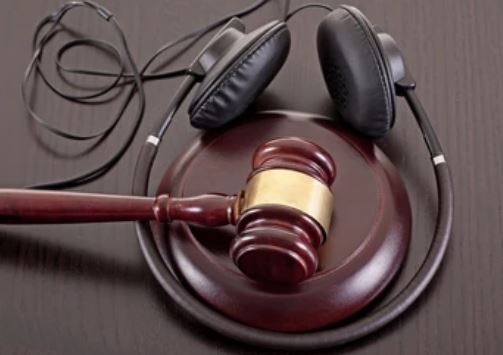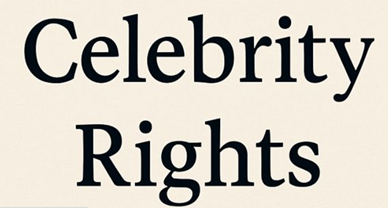Copyright Legislation vis-a-vis the Music Industry : A Comparative Study of India and Indonesia
INTRODUCTION
Good artists borrow, Great artists steal’ , however no matter how beautifully portrayed, might aptly land you a hefty copyright infringement suit in contemporary times. As society is modernizing, so are the trends of music leading to the evolution of the stance of legal rights revolving around music. The transformed state of music now also includes remixes which on a substantial purview might engage in conflict with the foundational legal rights of the music produced by the musician.
[Image Source: Shutterstock]
Copyright is the cumulation of two words: “copy” and “right,” alternatively one may argue that copyright refers to the legal rights of the intellectual property’s real owner. According to Professor Ian Hargreaves, “the copyright system cannot be regarded as adequate for the digital era since millions of individuals violate copyright every day by simply transferring audio or video files across devices.” The composer of a musical composition is the exclusive owner of the work’s copyright. The copyright holder of a musical piece enjoys unrestricted public performance rights, but if someone else does so without permission or proper notification, they are infringing on the owner’s copyright. Violations of copyrights are addressed under Chapter XI of the Copyrights Act of 1957. Infringement of copyrights is addressed under Sections 51 through 53A of the Copyrights Act, 1957.
Producers may claim exclusive ownership of an album or song in court owing to copyright protections. Rights to distribute and reproduce the work exclusively, as well as the right to grant a license that will allow the copyright holder to collect royalties, are included in this property. Master copyright and composer copyright are the two main categories of music copyright. Copyright for a work is formed the moment it is reproduced in any form, whether it is an audio recording, printed text, or electronic file. Besides, it is pertinent to note that in order for a music to be copyrighted under the governing act in India, it has to be in tangible form as the most basic requirement. The two principal benefits of acquiring your music’s copyright are the ability to get exposure for your records and the ability to sue anybody who violates your rights.
LEGISLATION IN INDIA
‘Music’ is defined under sec 2 (p) of The Copyright Act of 1957 and includes works composed of music and its graphical notation. Section 13 of the Copyright Act, 1957 consists of the versatile subject matter covered under copyright including ‘original musical work’. The two main categories of the music copyright are:
- Master copyright: Held by the lyricists, songwriters, composers etc.
- Compositional copyright: Held by either performers or their companies (labels).
Section 52 (1) (j) lays down the peculiar and specific uses withstanding the modifications of works such as sound recordings and music requiring the copyright owner’s consent. It accounts for a legal license to authorize the use of a copyrighted work in an irrefutable manner, provided that the usage by the user is in compliance with the law and payment of necessary fees. The court ruled in Gramophone Co. v. Super Cassettes[1] that permission from the music’s creator is required. The court provided the opposing position in the case of Gramophone Co v. Mars Recording Pvt Ltd.[2] was that so long as the scenarios of sec 52 (1) (j) of the act are followed, there may be no infringement, there isn’t any requirement of getting an assent.
Section 14(e) of the Act further talks about the rights held by any individual creating or owning a sound recording, which is as follows:
- Right to create any sound recording which encapsulates the original one:
- Right to sell any copy of the sound recording, or give it on rent, or offer it for sale or hire, and
- Right to communicate the work to the public.
In addition to the above, Section 57 of the Act stipulates “author’s moral rights,” grants the owner of a copyright the power to exercise moral authority over the work. In the said section, two types of moral rights are recognized which are:
- Right to paternity: This includes the right to claim authorship and the right to restrain others from misrepresenting their authorship.
- Right to integrity: It includes the right to prohibit or seek compensation for any appropriation, duplication, or other use of the protected work that would be defamatory to the claimant.
According to Section 30, the holder of copyrights may license all or part of his rights to another party. The 2012 Amendment included a new Section 31(c), which grants statutory licenses to anybody creating a “cover version” of the original work. As a corollary, the Copyright (Amendment) Act 2012, Section 38, identifies the rights of any performer; it states that the work of any performer cannot be reproduced or published without their permission for a period of 50 years beginning with the first day of the calendar year following the year in which the performance was made; hence, it is clear that the copyright owner of the original work holds total authority over it and over the newly created rights if the performer is not identified. Additionally, the owner has the discretion to transfer or assign Copyright to other parties. Copyright infringement is not considered to occur when a musical composition is performed at an educational institution for the sole purpose of circulating it through or engaging it with the staff, students, and their parents or guardians (as per Section 57 (1) (j) of the Act).
LEGISLATION IN INDONESIA
The Indonesian copyright regime is governed by its Copyright Act of 2014 (‘Act’). Music, with or without lyrics has been provided protection under this regime under Article 40 (1) (d) of the Act. The copyright shall subsist for the duration of the Author’s lifetime and up till 70 years after his death, as opposed to 50 years, as was provided by the previous legislation. The Act mandated the creation of two Collective Management Organizations, or CMAs, one for representing the interests of the authors and the other to safeguard the interests of related rights owners.
The Act further lays down the limitations on copyrights, provides and establishes penalties for infringement. The inculcation into the new Act of the principle of landlord liability, as per which building owners, if they are aware that their tenants are engaging in copyright infringement, can be held accountable for fines of a criminal nature, is perhaps the most striking aspect of the legislation. It further empowers the Ministry of Communication to take down websites indulging in copyright infringement.
Article 30 of the Act lays down the mandate of the return of economic rights of the performer back to him after a period of 25 years in case of sale or transfer. Laws concerning reproduction for personal use do not apply to musical works. Additionally, the Act goes an extra mile to affirm the status of copyright in works of unknown or unpublished authors, including unrecorded musical work.
The Indonesian government has recently passed new guidelines through Government Regulation No. 56 of 2021 on management of song and/or music copyrights royalties. These regulations define 13 commercial public venues and uses that are subject to royalty payments for playing songs or music under copyright, such as karaoke, conferences, cinemas, etc.
The National Collective Management Agency (Lembaga Manajemen Kolektif Nasional, or LMKN) collects and distributes royalties from commercial users on behalf of creators and rights holders. The organisation is bifurcated into two organs: MKN Creators and LLMKN Related Rights Holders, each headed by a separate commissioner, governed by additional ministerial regulations.
The new legislation entails the creation of two new repositories within a span of two years; the Song and Music Data Centre wherein all songs and music registered with Indonesia’s Directorate General of Intellectual Property (DGIP) will be listed and the Song and Music Information System, an internal system to be managed and established by LMKN with an aim to aid in royalty distribution on the basis of commercial use of protected musical works. The calculation of these royalties is to be done within the confines of the integrated data in the Song and Music Data Centre, and the provisions of the Copyright Law according to which rights holders, creators, and related rights holders can receive economic rights through a CMA, only through registering their musical works.
The LMKN, while primarily dedicated to the creators and rights holders holding the membership of the CMA, it is also mandated to collect royalties on behalf of member who are not affiliated to the CMA. Royalties belonging to those who are unknown or do not hold a membership of a CMA
Royalties for creators and rights holders who are not known or are not members of a CMA are kept in LMKN’s possession for a period of two years, following which a public announcement is issued to bring the creators or rights holders’ attention to these pending royalties, whereafter these royalties are added to the LMKN’s reserves. In case the distribution of royalties is disputed, the rights holder, creators and/ or related rights holders are at liberty to refer the matter to mediation to the DGIP.
YouTube in Indonesia has had frequent encounters with the country’s copyright law, few pleasant.[3] Recently the Supreme Court of Indonesia held a family of YouTubers who made song covers liable for copyright infringement and held that if the covering of the song is done without the permission of the creator for commercial purposes and faces objection from the related parties, it amounts to copyright infringement.[4]
CONCLUSION
The Indonesian government in its recent guidelines has aptly laid down the measures, procedures and objectives to collect royalties further protecting and enhancing the copyright of the original author, however India’s Act of 1957 only has certain mentions of royalties. After much deliberation upon the evolving societal paradigm the Indonesian government in 2014 has brought about a new act after repealing the old act with major changes which are in consonance with the modernisation of the music industry. The music industry, in particular, has unique difficulties when attempting to resolve issues of Copyright ownership. This industry is facing a cloudy path ahead with its attempt to revolutionize the era of dissimilar works of music and simultaneously protect the interests of the original composers of the music. Because there is so much music-related information online, determining ownership is a complex and time-consuming process. It’s important to remember that there are so many songs out there that it’s possible you’ll steal an idea or two from someone else’s composition. The Copyright Act protects cover versions of songs, but it’s not clear whether that protection extends to remixes. Record corporations and record labels have exploited artists for decades. By selling the songs independently or using them in a film, they are reaping huge profits at the expense of the artists.
Author: Nandini Tyagi & Satakshi N Dixi, in case of any queries please contact/write back to us at support@ipandlegalfilings.com or IP & Legal Filing.
[1] 1995 (1) ARBLR 555 Delhi
[2] O.S.No.4792/98
[3] Wijayanto, Xenia & Nurhajati, Lestari. (2020). Copyright issue on music back sound usage by Indonesian YouTuber. Journal of Social Studies (JSS). 16. 137-156. 10.21831/jss.v16i2.31055.
[4] Law, C. (2022, April 22). Indonesia – You Can Not Publish A Cover Song Without Permission! Conventus Law. https://conventuslaw.com/report/indonesia-you-can-not-publish-a-cover-song-without/



